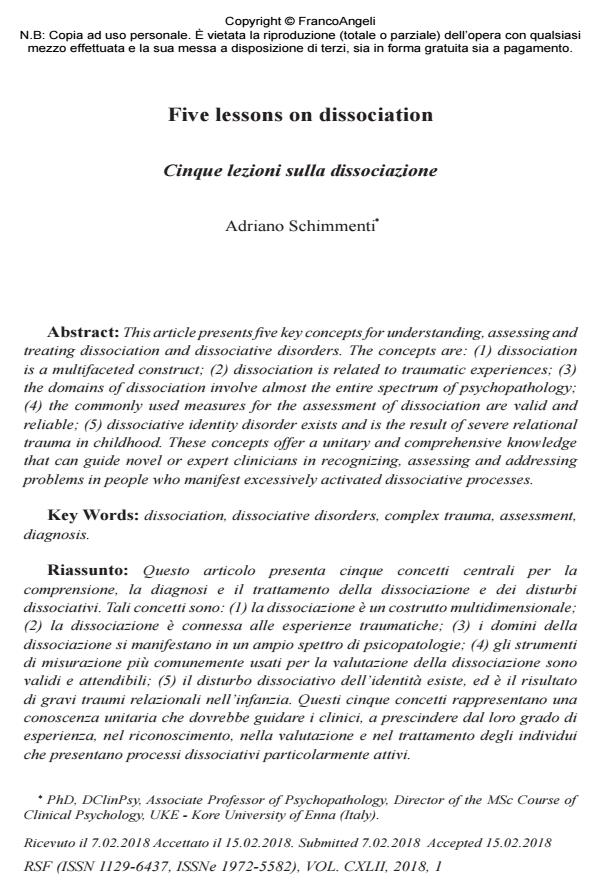Five lessons on dissociation
Journal title RIVISTA SPERIMENTALE DI FRENIATRIA
Author/s Adriano Schimmenti
Publishing Year 2018 Issue 2018/1
Language English Pages 19 P. 73-91 File size 1750 KB
DOI 10.3280/RSF2018-001005
DOI is like a bar code for intellectual property: to have more infomation
click here
Below, you can see the article first page
If you want to buy this article in PDF format, you can do it, following the instructions to buy download credits

FrancoAngeli is member of Publishers International Linking Association, Inc (PILA), a not-for-profit association which run the CrossRef service enabling links to and from online scholarly content.
This article presents five key concepts for understanding, assessing and treating dissociation and dissociative disorders. The concepts are: (1) dissociation is a multifaceted construct; (2) dissociation is related to traumatic experiences; (3) the domains of dissociation involve almost the entire spectrum of psychopathology; (4) the commonly used measures for the assessment of dissociation are valid and reliable; (5) dissociative identity disorder exists and is the result of severe relational trauma in childhood. These concepts offer a unitary and comprehensive knowledge that can guide novel or expert clinicians in recognizing, assessing and addressing problems in people who manifest excessively activated dissociative processes.
Keywords: Dissociation, dissociative disorders, complex trauma, assessment, diagnosis.
Adriano Schimmenti, Five lessons on dissociation in "RIVISTA SPERIMENTALE DI FRENIATRIA" 1/2018, pp 73-91, DOI: 10.3280/RSF2018-001005